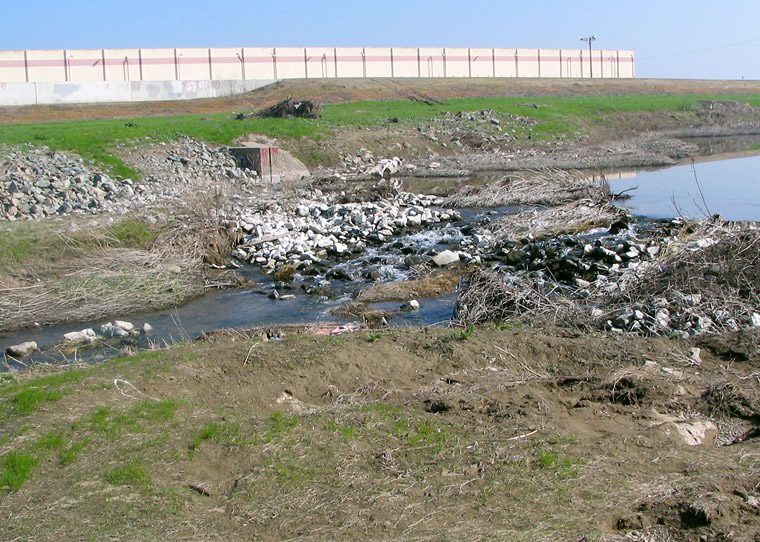Wednesday October 12, 2011

Fish migration barriers are any obstacles that may interfere with or prevent the upstream or downstream movement of fish. These barriers can be caused by numerous natural and manmade structures such as culverts, dams or weirs, cascades or falls, woody debris (logjams), beaver dams, and instream road crossings. Unimpeded fish passage is especially important for anadromous fish like salmon and steelhead, which migrate both downstream and up in order to complete their lifecycle.
Over the past two decades fisheries managers have become increasingly aware of fish passage barriers and have been working with local agencies to address passage issues. In this case, Stockton East Water District is taking steps to improve fish passage in the Calaveras River and Mormon Slough. A study by the California Department of Water Resources’ Fish Passage Improvement Program produced an inventory and evaluation of barriers on the Calaveras River system, a tributary to the San Joaquin River in California’s Central Valley.

One of the most difficult barriers for fish to pass in the Calaveras River system was a flashboard dam in the Stockton Diverting Canal, pictured above. A flashboard dam, is a removable dam created using boards fitted onto a concrete ‘apron’. The lower photo shows the flashboards in place. Between late spring and early fall the boards hold water back, creating pools. During the winter months the flashboards are removed, as shown in the top photo, but in this case the concrete apron remained an obstacle to migration. During low flow conditions the steep slope of the channel just downstream of the concrete apron would become a 5-foot drop, lined with rip-rap, impassible to upstream migrating steelhead (Oncorhynchus mykiss). In an effort to improve fish passage at this location, a re-designed rock ramp fishway and ‘boulder-weir’ style grade control structure is currently being constructed and is near completion. Boulder weirs are designed to create natural steps, and in this case carefully placed lines of boulders arranged in an arch pointing upstream slope upward at the bank to concentrate low flows to the center of the channel. The new contoured channel will spread the original 5-foot drop across about 100 feet of river length, making the structure passable under most low flow conditions (greater than 15 cfs) when flashboard dam is out. This is the first of four barrier removal projects planned for the next few years.
